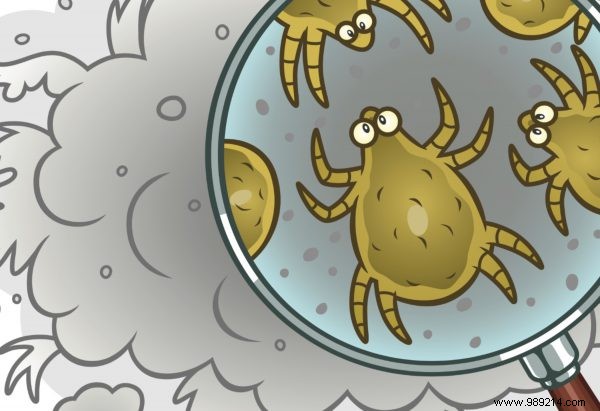
Do you suffer from a stuffy nose, sneezing, itching in the nose and eyes, shortness of breath, wheezing and / or coughing up phlegm? And especially at home? Maybe you suffer from house dust mites (allergy)?
House dust mites are small, spider-like creatures that live in house dust. House dust mites are especially common in mattresses and bedding. The animal eats dander from people (and animals). It also loves moist environments. Therefore, make sure that your bed is clean and dry.
Do not make your bed immediately after getting up, but keep the duvet open during the day so that it can dry. Wash your sheets, pillowcases and duvet cover at sixty degrees at least once every two weeks and wash your duvet, blankets and pillows at sixty degrees every six weeks. Preferably let the laundry dry outside, so that your house does not get damp.
Read also: 'You probably didn't know this about sneezing'
House dust mites are especially fond of textiles, as they retain a lot of dust. If you suffer from allergy complaints, it can be smart to adjust a few things in your home.
Smooth materials hold less dust and are easier to clean. For example, swap carpeting for a wooden floor and replace your curtains for blinds. Choose a bed with an air-permeable bottom and use lockable cabinets, so that less dust gets in. Also be careful with old stuff, they often contain a lot of house dust mites. Think of old, upholstered chairs and sofas, carpets and rugs.
House dust mites can also be found in clean houses. It is difficult to completely banish them from your home, but you can significantly reduce the amount of mites by keeping your house as dust-free and ventilating as possible.
Wipe the cabinets, windowsills and other surfaces weekly with a slightly damp cloth or dust wipes. Vacuum regularly. Open your windows as often as possible, just like ventilation grilles. Especially in the bedroom and bathroom it is smart to regularly open the window wide. If it is cold and damp, it may help to turn on the heating. This allows the moisture to be absorbed better.
There are all kinds of useful tools that can help to reduce the amount of dust mites. For example, there are allergen-proof mattresses, allergen-proof duvet covers, special vacuum cleaners, air filters and dust mite killers.
Please note:often the effect is not scientifically proven. So it's mainly a matter of trying out whether you benefit from something.